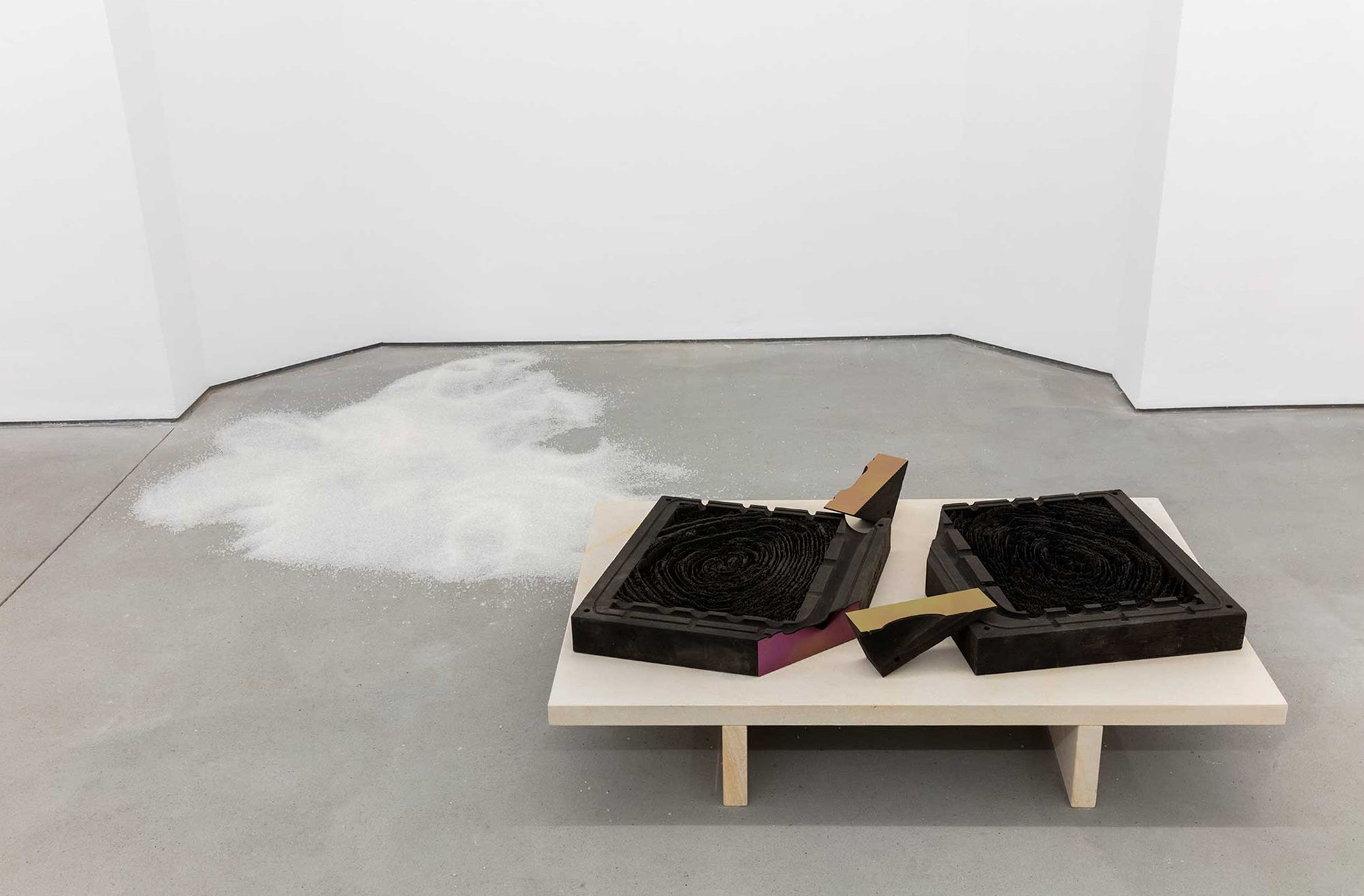COLLAPSE IS NOT A DESTINATION
Julian Charrière, Marjolijn Dijkman, Raphaël Fischer-Dieskau, Andreas Greiner, Robert Gschwantner, Spiros Hadjidjanos, Almut Linde, Ulrike Mohr, Mazenett Quiroga, Marike Schuurman, Raul Walch
curated by Dr.Almut Huefler & Stephan Klee
opening hours
6 Jul – 24 Aug 2024
Wed – Sat 2 – 6 pm
and by personal appointment
location
frontviews at HAUNT
Kluckstraße 23 A Yard
D – 10785 Berlin
social media
IG #frontviews_
#haunt_berlin
This project is profoundly supported by Senate Departement for Culture and Social Cohesion. It´s also made possible with the initiative of the whole collective.



Programme
Vernissage
Fri 5 Jul 5 – 9 pm
Panel Talk
Thu 11 Jul at 7 pm
with Dr. Didem Aydurmus, Jörg Geier (Club of Rome), Prof. Dr. Almut Linde,
moderated by Dr. Almut Hüfler
Finissage
Sat 24 Aug 5 – 8 pm
COLLAPSE IS NOT A DESTINATION conceptualizes our planet in the Anthropocene as an endangered garden with finite resources, in which our activities have a profound impact on our basis of existence. On display are works from the fields of sculpture, photography and installation. Using found materials, they offer a long-term time dimension and point to the dilemma of the capitalist growth paradigm: that the long-term effects of our short-term profitable actions are not adequately taken into account. The consequences have long been clear: 'technical fossils' such as aluminium, concrete residues, plastic particles, carbon compounds from the combustion of fossil fuels, fallout from nuclear bomb tests, etc. can be found in sediment layers, microplastics can be detected in bodily fluids - and the man-made climate catastrophe can no longer be denied.
This development has been known for more than half a century and was described in Limits to Growth, the first report by the Club of Rome in 1972. Since then, we need to ask ourselves: Why is it still not possible for us as a collective to take countermeasures and stop the destruction of our livelihoods that has long been predicted in models? Why is it that we cannot "see" or recognize reality?
The report pointed out that the human perspective is radically limited to what is close in time and space. Long-term or spatially distant effects do not seem relevant for decision-making, as we cannot grasp the complexity of the process and its dynamics in everyday life. At the same time, however, decisive changes for the entire process occur just there.
The title of the exhibition quotes Ugo Bardi, member of the Club of Rome and co-editor of Limits and Beyond: 50 years on from The Limits to Growth, what did we learn and what's next? from 2022: "Collapse is not a destination, it is a process". A process that we can hardly stop with our usual way of thinking. "The crisis is that people do not recognize the problems they cause. They can do something, but they cannot perceive the result of their actions in a universal reality." (Almut Linde: Radical Beauty, 2018).
The exhibition uses artistic strategies to make viewers aware of the phenomena of complex processes and contexts. COLLAPSE IS NOT A DESTINATION "shows" instead of "tells": the presence of the original material overcomes the spatial and temporal distance for the moment of viewing, the implications of our capitalist lifestyle can be experienced sensually and directly.
The exhibition is spread over two floors and features two themed areas: Earth and electricity on the lower floor, forest and fire on the upper floor. Downstairs, works such as Marjolijn Dijkman's artificial lightning trails can be seen, salt crystals from the Nuclear reprocessing plant in Gorleben by Almut Linde, works by Julien Charrière on the postcolonial ecology of Bikini Atoll, oil and sculpture/sand creations by Robert Gschwantner, Marike Schuurman's photographic works from open-cast mining in the Lausitz area, Spiros Hadjidjanos' silicate 3D print of an American copper mine and a video work by Raul Walch, which brings together mining and melting Alpine glaciers. On the upper floor, there will be Andreas Greiner's AI video about threatened forests, gilded photographs of the Amazon region by Colombian artist duo Mazenett Quiroga, an installation with charred branches and ceramics by Ulrike Mohr, acoustically accompanied by the voices of extinct bird species in an interactive sound installation by Raphaël Fischer-Dieskau.
